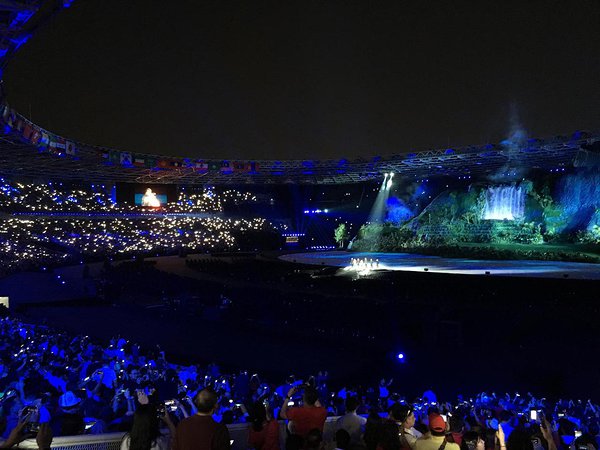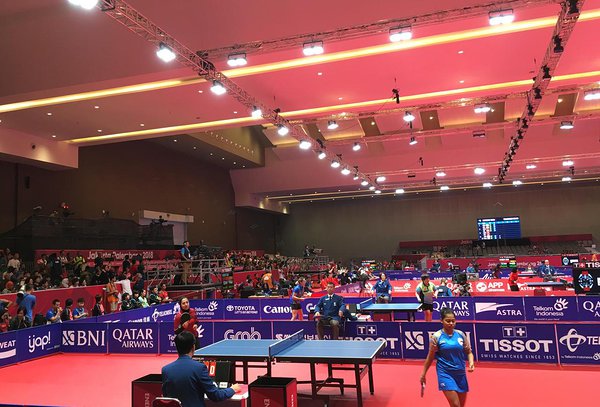The Asian Games is the biggest multi-sport event in Asia, gathering athletes from 45 countries every four years, with more than 450 matches. In 2018, the games took place in several locations in Indonesia. The following case study looks at the challenges the government of Indonesia was facing to measure the socio-economic impact of the event, and how mobile positioning data (MPD) turned out to be the right solution for them.
- The use of mobile positioning data allowed the government of Indonesia to measure tourism at a precise level and make analyses that would not have been possible with traditional solutions.
- The novel approach in tourism statistics provided results just two weeks after the event ended, proving to be a cost-effective solution.
The Asian Games is the biggest multi-sport event in Asia, gathering athletes from 45 countries every four years, with more than 450 matches. In 2018, the games took place in several locations in Indonesia and attracted about 80,000 foreign visitors from 126 countries.
The government of Indonesia, faced with the challenge of measuring the socio-economic impact of the event, turned to mobile positioning data (MPD) to measure tourism, which provided an accurate assessment of the impact the event had on the Indonesian economy at large.
This multi-sport event was considered a success, and the evidence-based information helped communicate to the people of Indonesia the benefits of hosting the Asian Games, especially the advantages to the regional and provincial economy in both the short and long term.
The following case study looks at the challenges the government of Indonesia faced, and how MPD turned out to be the right solution for them.
The high cost of traditional tools and methods
Traditional ways to measure the impact of an event of this magnitude present many drawbacks. Surveys, commonly used for this purpose, have a high cost of planning, conducting, and analysing.
The 2018 Asian Games in Indonesia attracted both local and international visitors to several locations in Jakarta, Palembang, and Bandung. An event of this size, taking place in different locations, and with such a diverse list of participants, also presented sampling problems for using surveys.
Other traditional sources of information about international visitors, immigration or border surveys, for instance, do not gather data on mobility to event venues, visits to tourism destinations, or other mobility during the time of the event. Moreover, for national visitors, there is a lack of information about their province of origin or any other mobility data.
Finding the right solution
When the Indonesian Ministry of National Development Planning (BAPPENAS) needed a better solution to analyse the impact of the 2018 Asian Games, they took note of another national institution that was already using MPD for official tourism statistics.
Indonesia’s Ministry of Tourism, together with the statistical agency Badan Pusat Statistik (BPS) was already using MPD to release monthly cross-border tourism statistics as part of official statistics. At the time in 2018, that work consisted of combining data from Telkomsel, the largest mobile operator in Indonesia, with Positium’s methods and solutions for analysing mobile positioning data.
Statistics production has experienced major changes in recent years, fuelled mainly by two new realities: the need for disaggregated information and the rise of new data sources. In this scenario, big data such as MPD has shown the potential to complement traditional data sources measuring society faster, more accurately, and with new indicators.
As part of the cooperation between BPS Indonesia and Positium, it was proven that the data collected through MPD was far more accurate than the output of traditional surveys. Moreover, for events statistics, with MPD it is possible to measure participation even if the event takes place in the open air or simultaneously at several locations. Compared to ticketing data, MPD allows organisers to see which sub-events were popular and how people moved between different event locations.
Read more about the partnership between BPS Indonesia and Positium: 'Restarting the local tourism industry in Indonesia: leveraging mobile positioning data for better insights'
A clear picture of the economic impact of the event in only two weeks
The government of Indonesia decided to use MPD instead of traditional methods to not only gather data about visitors to the event’s venues but also identify tourism destinations visited in the country and time spent; analyse the increase in tourism statistics during the events; and integrate MPD with other data to improve the models of economic impact analysis.
This novel approach to tourism statistics provided BAPPENAS with results just two weeks after the event ended, while other entities, like ticket sales offices, had yet to produce their statistics summaries.
The biggest advantage of using MPD is the possibility to analyse mobility patterns and trends from the data, which would not be possible with traditional sources of information, providing crucial insights. Furthermore, MPD uses existing information, stored by mobile operators, which means there are no direct costs associated with a network of interviewers or response burden for travellers as potential respondents.
Analysing the data allowed to measure tourism at a precise level
This project was a cooperation between BPS Statistics Indonesia, Telkomsel, and Positium.
The analysis of the mobile positioning data allowed the government of Indonesia to measure tourism at a precise level and create comparisons to benchmark levels and the nature of tourism.
For instance, the government learned that those who visited the 2018 Asian Games stayed for a longer period and visited many other locations in Indonesia. The most visited places were important tourist destinations like Bandung, Banyuasin, Kemaro island, Batam, and Bali.
Before the event, BAPPENAS made predictions on the number of stays from athletes, media, and spectators. Analysing the MPD data made it possible for the ministry to get trustworthy figures, and expand their analysis with other indicators and mobility flows, which would not be possible with traditional ways.
To learn more about the project, read the article 'Project Highlight: Analysing Asian Games'
Measuring the impacts of other events
In October of the same year, a similar analysis was conducted to measure the impact of the annual meeting of the World Bank Group and the International Monetary Fund, which took place in South Bali. The results of the analysis provided the government of Indonesia with input for a clear assessment of the impact of both events.
Positium has worked with other event organisers and tourism boards around the world to measure the impact of their events. Some of the projects have consisted of measuring the impact of a megaevent on a case-by-case basis, such as the 2018 Asian Games, while others are part of an ongoing tourism statistics project in a country, where data about specific events that have a positive effect on tourism can be analysed.
This is the case in Estonia, where Positium has been supporting the production MPD-based tourism statistics since 2008. In 2019, as part of this ongoing work, Positium analysed the mobility flows that occurred during the 150th Song Celebration to see where the more than 70,000 spectators originated from. You can read about the project in this article https://positium.com/blog/estonian-song-celebration-statistics
Would you be interested in learning more about mobile big data and Positium? Let's talk about what mobile big data can do to help your organisation make decisions based on population mobility.
.png)

